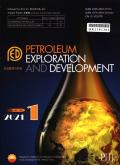An intelligent integrated production optimization technique for waterflooding reservoirs
IF 8
Q1 ENERGY & FUELS
引用次数: 0
Abstract
The production optimization in the closed-loop reservoir management is generally empirical, and challenged by the issues such as low precision, low efficiency, and difficulty in solving constrained optimization problems. This paper outlines the main principles, advantages and disadvantages of commonly used production optimization methods/models, and then proposes an intelligent integrated production optimization method for waterflooding reservoirs that considers efficiency and precision, real-time and long-term effects, and the interaction and synergy between a variety of optimization models. This method integrates multiple optimization methods/models, such as reservoir performance analysis, reduced-physics models, and reservoir numerical models, with these model results and insights organically coupled to facilitate model construction and matching. This proposed method is elucidated and verified by field examples. The findings indicate that the optimal production optimization model varies depending on the specific application scenario. Reduced-physics models are conducive to short-term real-time optimization, whereas the simulator-based surrogate optimization and streamline-based simulation optimization methods are more suitable for long-term optimization strategy formulation, both of which need to be implemented under reasonable constraints from the perspective of reservoir engineering in order to be of practical value.
水驱油藏智能综合优化生产技术
闭环油藏管理中的生产优化一般是经验式的,存在精度低、效率低、求解约束优化问题困难等问题。概述了常用生产优化方法/模型的主要原理、优缺点,提出了一种兼顾效率与精度、实时性与长期性、多种优化模型相互作用与协同作用的水驱油藏生产智能集成优化方法。该方法将油藏动态分析、简化物理模型和油藏数值模型等多种优化方法/模型集成在一起,将这些模型结果和见解有机地耦合在一起,便于模型构建和匹配。通过实例对该方法进行了说明和验证。研究结果表明,在不同的应用场景下,最优生产优化模型是不同的。简化物理模型有利于短期实时优化,而基于模拟器的代理优化和基于流线的模拟优化方法更适合于长期优化策略的制定,从油藏工程的角度来看,这两种方法都需要在合理的约束条件下实施,才能具有实用价值。
本文章由计算机程序翻译,如有差异,请以英文原文为准。
求助全文
约1分钟内获得全文
求助全文

 求助内容:
求助内容: 应助结果提醒方式:
应助结果提醒方式:


